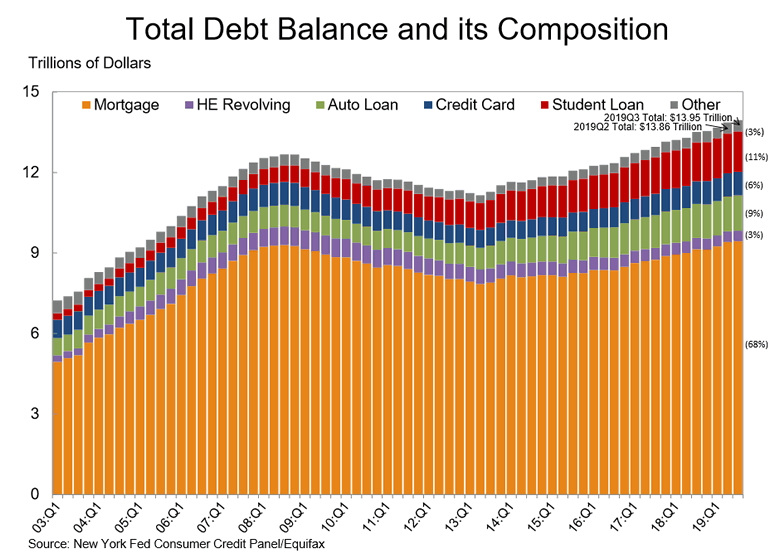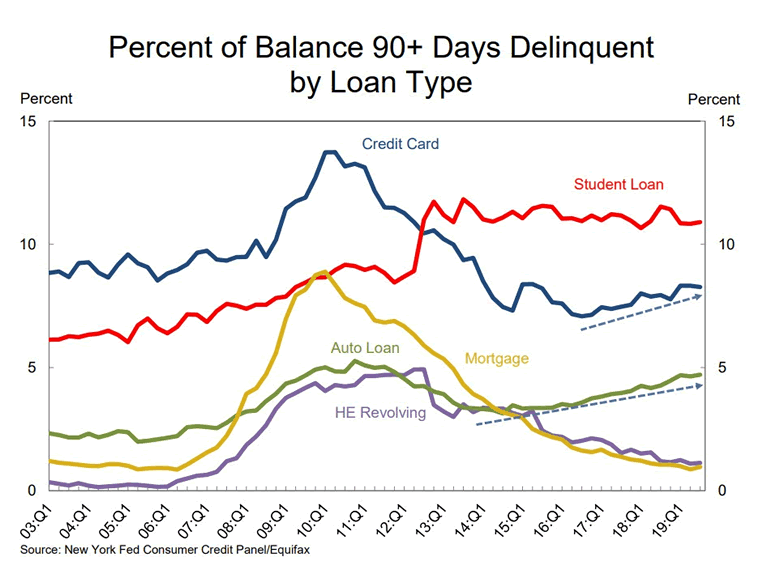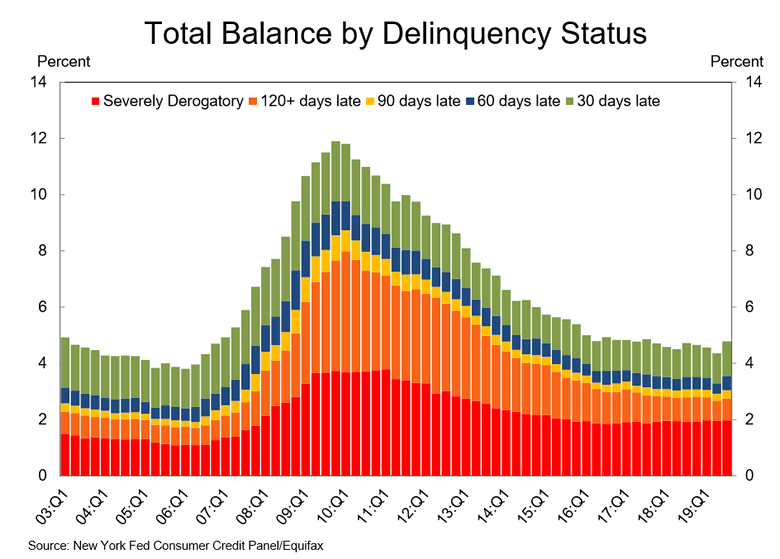
|
Household Debt Climbs in 3rd Quarter as Mortgage and Auto Loan Originations Grow NEW YORK—The Federal Reserve Bank of New York’s Center for Microeconomic Data today issued its Quarterly Report on Household Debt and Credit, which shows that total household debt increased by $92 billion (0.7%) to $13.95 trillion in the third quarter of 2019. This marks the 21st consecutive quarter with an increase, and the total is now $1.3 trillion higher, in nominal terms, than the previous peak of $12.68 trillion in the third quarter of 2008. The Report is based on data from the New York Fed’s Consumer Credit Panel, a nationally representative sample of individual- and household-level debt and credit records drawn from anonymized Equifax credit data. Mortgage balances—the largest component of household debt—rose by $31 billion in the third quarter to $9.44 trillion. Balances on home equity lines of credit (HELOC), which have been declining since 2009, fell by $3 billion this quarter, bringing the aggregate outstanding balance to $396 billion. Non-housing debt balances rose by $64 billion in the third quarter, with increases seen across a variety of debt types, including $18 billion in auto loans, $13 billion in credit card balances, and $20 billion in student loans. Auto loan originations remained high in the third quarter at $159 billion, a small increase from the volume seen in the second quarter of 2019. Mortgage originations, which include mortgage refinances, stood at $528 billion this quarter compared to $445 billion in Q3 2018. Credit standards tightened slightly in the third quarter of 2019, with the median credit score of newly originating mortgage borrowers rising to 765, a 6-point increase from the previous quarter. The median credit score for new auto loan originations increased to 711, an 8-point jump from in the second quarter of 2019. “New credit extensions were strong in the third quarter of 2019, with auto loan originations reaching near-record highs and mortgage originations increasing significantly year-over-year,” said Donghoon Lee, research officer at the New York Fed. “The data suggest that households are taking advantage of a low-interest rate environment to secure credit.” The New York Fed also issued an accompanying blog post that explores disparities in student loan outcomes by borrower race. The Report includes a one-page summary of key takeaways and their supporting data points. Overarching trends from the Report’s summary include: Housing Debt Foreclosures remain very low by historical standards. Approximately 65,000 individuals had a new foreclosure notation added to their credit reports between July 1- September 30, 2019. Student Loans 10.9% of aggregate student debt was 90+ days delinquent or in default in Q3 2019. The transition rate in 90+ days delinquent among student loans was 9.3%, an improvement from the previous quarter. Account Closings, Credit Inquiries and Credit Inquiries Account closings declined in the third quarter but remained in line with the past year’s trend, with 211 million accounts closed within the past 12 months.
|
| © 2006 - 2022. All Rights Reserved. |


